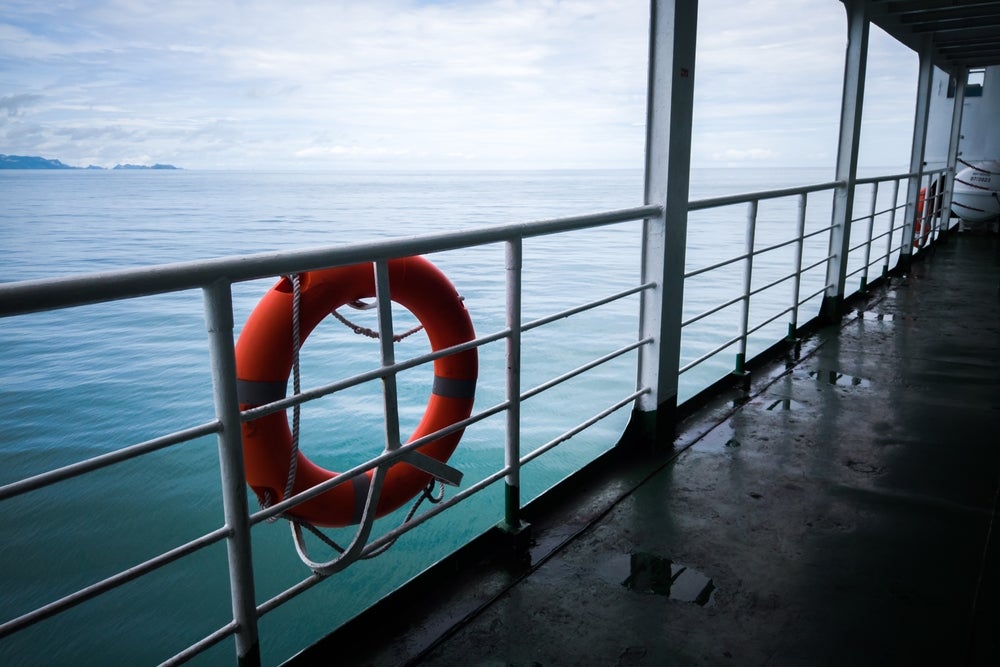AI has been making headlines since the launch of ChatGPT, an AI ‘large language model’ that anybody with an internet connection can access.
While much of the hype focuses on its ability to write articles or invent algorithms to solve complex problems in a flash, it’s also opened doors of possibility for industries worldwide – the maritime sector being no exception.
Within my remit as the head of health, safety, security, environment, and quality (HSSEQ) at P&O Maritime Logistics, the advancement in AI technology has been transformative.

Our global company handles millions of containers every year, either shipping them across the world’s waters or, as with our port services division, enabling the flow of containers within various ports. These operations rely on skilled teams and the use of intricate, heavy machinery.
Our logistics platform, powered by AI, is a tool we are implementing to enhance and simplify some of these functions. This innovation leads to increased efficiency and throughput volumes, directly benefiting our customers.
See Also:
But as I discovered just a few months ago, ChatGPT is an AI tool that can directly assist our crew in safety.
How well do you really know your competitors?
Access the most comprehensive Company Profiles on the market, powered by GlobalData. Save hours of research. Gain competitive edge.

Thank you!
Your download email will arrive shortly
Not ready to buy yet? Download a free sample
We are confident about the unique quality of our Company Profiles. However, we want you to make the most beneficial decision for your business, so we offer a free sample that you can download by submitting the below form
By GlobalDataPlotting the course to smart safety
And this is what got me thinking: what if this software could create a real-time health and safety tool?
There were many considerations to this idea, the most obvious being safety. As a potential lifeline for our employees, this AI safety concept must be accessible the world over and in numerous languages. Further, it must give accurate, legal responses to questions – because the alternatives could be dire.
For our needs, this is where I identified our biggest barrier: reliability. Open AI is only as good as the information put into it. So, while ChatGPT can present me with health and safety data from around the world, it’s on me (a human) to check its sources are correct.
Add to this AI’s potential to ‘hallucinate’ and offer false information when it doesn’t have the right data makes ChatGPT alone too high risk to be a health and safety tool for maritime logistics – or in any industry, for that matter.
As a potential lifeline for our employees, this AI safety concept must be accessible.
There’s also the matter of data protection. Health and safety risk assessments conducted at our company are private, as are the details of the employees we endeavour to protect. From a business perspective, we can’t yet trust open AI to not share this information publicly, putting our staff and operations at risk.
Recognising the incredible capabilities of this tool, we did not wish to restrict our teams from accessing Chat GPT. Rather, our intent has been to provide clear guidance on how to leverage its strengths within the workplace, while cautiously avoiding the risks.
This approach ensures that the technology is used in a manner that aligns with our organisational standards and safety protocols, reinforcing our commitment to accuracy and responsible innovation.
Putting the pieces together
So, how did I get from here to our transformative AI tool that 3,000 employees have been trusting for their health and safety needs? The answer is prompt engineering.
ChatGPT offered me inspiration and a guide to creating a secure safety chatbot tailored to our business’s needs. Prompt engineering my own AI solution, a programme built on company data that has strict parameters to respond only with set information for certain queries, I could overcome security concerns and create a tool that could, ultimately, save lives.
The result is AISA: our AI Safety Assistant. AISA is an agile resource which can respond to employee queries anywhere in the world and in any language. Its real-time functionality allows us to update company procedures or training material in one region and the data will be made accessible in all languages instantly.
This has made our safety updates faster to roll out as we’re saving time and money on manual translation, and I genuinely believe that this is the future of integrated management systems.
It is important to note, the AI system is continually evolving.
It is important to note, the AI system is continually evolving. With each query it receives, we monitor its interactions and responses with our global teams. This process reveals valuable insights that are uniquely experienced by our people in the field; insights that might have been overlooked or slowly filtered through various departments to my team.
In this sense, AI has forged a line of intelligent communication between my department and our crews worldwide, we can see what they are asking and improve the answers. This enhanced communication enables us to identify and integrate various improvements into our safety procedures that we may not have recognised previously.
An employee can type in ‘There’s been an incident!’ and AISA will spring into action with a fact-finding mission, acquiring the information it needs to provide the best, most accurate safety guidance and documentation quickly in a time of crisis. In a worst-case scenario, this could prove a lifeline for our employees.
AI transforming workplace safety
By leveraging advanced AI technology, we’ve introduced new levels of learning, knowledge retention and communication. Thanks to ASIA, our employees are well-equipped and can access vital information faster than ever.
What is key, however, is that AISA – like much of the AI-driven technology we’re deploying – is aiding our staff in their roles, not replacing them. If an incident occurs, we need our staff to respond as quickly as possible.
AISA simply gives them that power, providing instant assistance so skilled employees can act accordingly and keep operations running smoothly.
AI innovations like AISA can transform our workplace environments to empower and protect crew. By enhancing how we manage safety processes across our fleet, AI can support to ensure that all our crew return home safely and build confidence with our customers and stakeholders.
And, through the learnings we receive from AISA every day, we can make safety an ever-evolving journey, minimising costly time and errors to transform global maritime logistics.









Related Company Profiles
Asia Co Ltd
PAMP SA